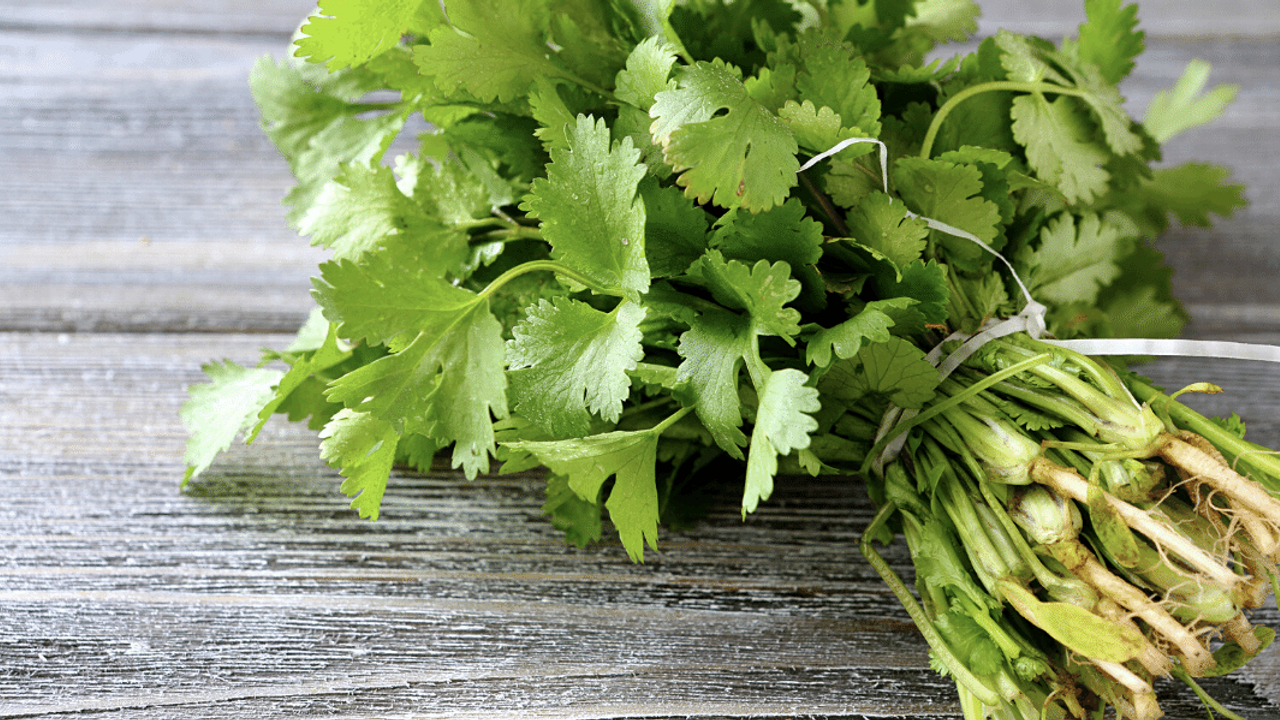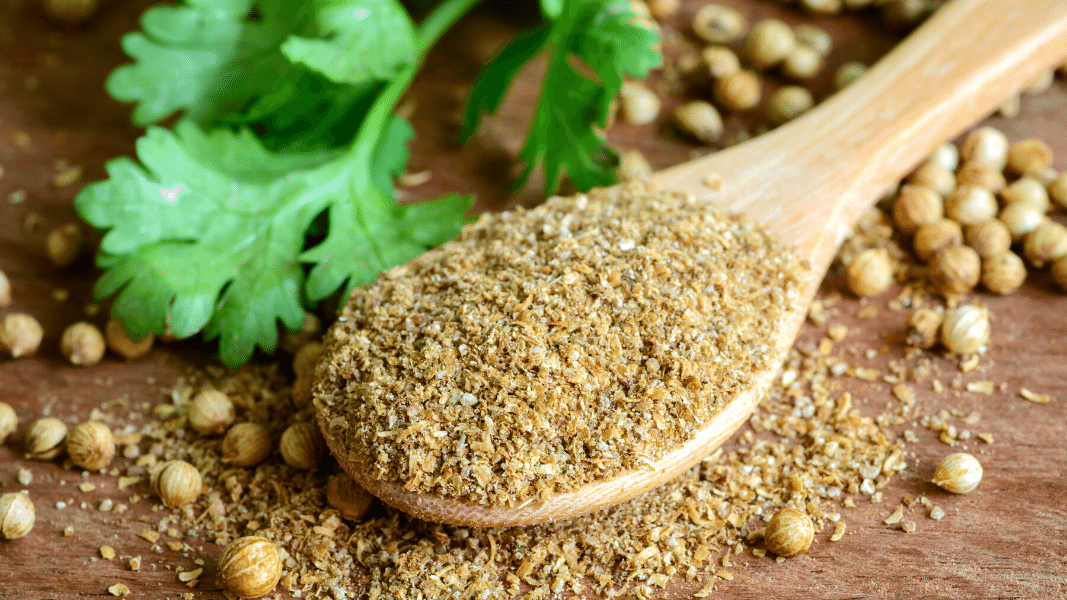What Is Cilantro & How Do You Use It?
May 11, 2021
As the saying goes: you either love it or you hate it! Cilantro is an herb that packs quite a distinct flavor that makes it a great addition to many flavorful dishes around the world.
One thing is for certain: cilantro is an absolute powerhouse in terms of flavor, nutritional value, and health benefits.
It’s popular in many cuisines worldwide, from Thai and Vietnamese over Northern African all the way to Mexican and Caribbean.
So, for anyone who is still on the fence, here is everything you need to know about this impressive herb.
What is Cilantro?
Cilantro (also known as coriander or Chinese parsley) is an herb with long, juicy stems and bright green, feathery leaves. The word ‘cilantro’ comes from Spanish and refers to the green leaves of the plant.
When talking about “cilantro”, we tend to mean the leafy part of the plant, which can be consumed fresh, dried, or cooked. Coriander often refers to the plant’s seeds, which are usually dried, ground, and used as a spice. In some cuisines, such as Thai cuisine, even the roots would be used for cooking.
As well as boasting some impressive health benefits, it is one of the most versatile and widely used plants out there! It is also available all year round, which adds to its flavorsome appeal.
What does Cilantro taste like?
Cilantro has a quite distinct flavor. It can be described as pungent and intense, yet fresh and lemon-like. A small part of the population, however, perceives the taste of cilantro as soapy instead. This is due to a genetic disposition that emphasizes the flavor of aldehydes present in the cilantro plant.
Cilantro leaves are usually added just right before serving to retain most of its flavor and bright green color. Cilantro leaves are also often used in salsas, chutneys, or Thai green curry paste.
The coriander seeds and coriander root, on the other hand, are used during the cooking process to infuse the dish with their unique flavor. This includes curries, soups, stews, or pickled vegetables.
While the fresh leaves are more common in Asian cuisine, the seeds are rather used in European cuisine.

How Cilantro Is Grown
Native across Southern Europe, North Africa, and Sout-West Asia, cilantro is nowadays commercially grown in almost every country. It is therefore a staple in most food stores and markets.
The cilantro plant grows all year round. Depending on where it is grown, the plant can reach a height of 30 to 90 cm. It grows best under cool, moist conditions and can withstand temperatures as low as 10 °C (50 °F). It is best planted in early spring or late summer/early fall when the temperature is not too hot.
Warmer conditions will lead to flowering, also known as bolting. The flavor of the cilantro leaves will become less intense once the plant starts bolting.
The seeds will start to germinate around 1-2 weeks after planting and can be harvested within 120 days.
Cooking with Cilantro
A heavy-weight amongst the herb family, Cilantro is widely used across the entire globe: from central America, across Europe and North Africa, through the Middle East, and all the way to South-East Asia! It is hard to imagine tacos, falafels, and even pho noodle soup without it, but its versatility reaches far beyond these famous favorites!
Raw cilantro leaves are the most powerful in aroma and are commonly added to salsas, chutneys, pestos, marinades, and dressings. You can even add them to your salads for an extra boost of flavor.
Cilantro makes a great addition to cooked meals too, as it adds depth of flavor, yet is not quite as potent as when freshly sprinkled on top. Add it to soups, broths, and curries, bake it into your bread (like the Romans used to do!), mix it into a stir-fry, and add it to all kinds of burger patties.
Dried and ground coriander powder makes a great, longer-lasting alternative to fresh cilantro and is wonderful when added to curry pastes and soups.
Cilantro’s citrusy, earthy, mildly spicy notes pair wonderfully with mushrooms, potatoes, pumpkin, lentils, quinoa, and couscous (the list goes on). It is also great in a fresh juice, a spicy margarita, and as a comforting, headache-relieving hot tea.
It also pairs well with other strong flavors, such as mint, garlic, lime, basil, and chilies.
Experimentation is key!
>> Do you want to learn how to cook with Cilantro? Join our 7-Day Free Trial and discover how cilantro is used in Thai and Vietnamese cuisine <<
How to Store Cilantro
When buying cilantro, be sure to look for thick, strong stems and luscious, green leaves – stay away from limp, yellow-looking cilantro, as it is starting to wilt.
The best way to store fresh cilantro (and other herbs) is to keep them in a cool, moist environment. Avoid bruising the leaves as it will promote
Here’s how to store it
- Take a Tupperware container and line it with moist paper towels
- Place the cilantro leaves on top, cover it again with moist paper towels.
- Close the lid of the container and place it inside your fridge.
- Change the paper towels every 2-3 days to ensure the cilantro stays moist.
This way, your cilantro will stay perfectly fresh for up to 1-2 weeks.
Cilantro’s Health Benefits
Did you know that herbs (and spices) are the most nutritionally dense food out there? Cilantro is no exception! It is a phenomenal source of Vitamin A and K, as well as potassium, iron, and manganese.
It has a high content of antioxidants which help your body get rid of free radicals. These antioxidants have been shown to reduce inflammation and thus may help prevent diseases that are linked to oxidative stress.
Cilantro might also contribute to heart health. Some research shows that cilantro might help to reduce the levels of bad LDL cholesterol. It has also been shown to reduce blood pressure.
Nutritional value of cilantro
100 g of fresh cilantro have:
- 23 kcal
- 0.5 g fat
- 3.7 g carbohydrates
- 2.1 g protein
- 2.8 g fiber
On top of that, 100 g of fresh cilantro contain:
Vitamins
- 6748 IU of Vitamin A (225% of RDA*)
- 27 mg of Vitamin C (30 % of RDA)
- 2.5 mg of Vitamin E (17 % of RDA)
- 310 mcg of Vitamin K (258 % of RDA)
- 200 mcg of Vitamin B2 Riboflavin (12 % of RDA)
- 62 mcg of Folate (16 % of RDA)
Minerals
- 1.8 mg of Iron (22% of RDA)
- 521 mg of potassium (15% of RDA)
- 26 mg of magnesium (7% of RDA)
- 67 mg of calcium (7% of RDA)
- 0.4 mg of manganese (19% of RDA)
- 0.2 mg of copper (25% of RDA)
*RDA = recommended dietary allowance
Some additional benefits include:
- Rids the body of heavy metals
- Lowers anxiety and improves sleep
- Prevents urinary tract infections and inflammation (acts as a diuretic)
- Maintains a healthy menstrual system and alleviates PMT
- Aids digestion and alleviates gastric disorders
- Combats bad breath and lack of appetite
So, whether you are a cilantro aficionado or cynic, the health advantages speak for themselves.
There are endless ways to incorporate it into your cooking, both for maximum taste or subtle flavor, and it will offer your mind and body an abundance of natural benefits that will leave you feeling better than ever.
Join Our Newsletter
Get the latest updates on new recipes, cooking tips, upcoming courses, and exclusive promotions.
We hate SPAM. We'll only send you valuable content, and you can unsubscribe anytime.





